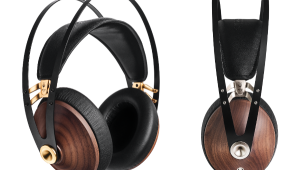Focal Utopia Headphones Review

AT A GLANCE
Plus
Beryllium diaphragm
Rock-star cosmetics
Fine-tuned highs and
timbre
Minus
Expensive
THE VERDICT
Focal’s Utopia headphones are a bleeding-edge statement from a pedigreed loudspeaker manufacturer that has made the most of its speaker-designing experience.
When I look back on all the dumb things I did as a kid, surely one of the dumbest was pitching rocks and dirt balls at a wasp nest. With each impact, a cloud of wasps rose from the nest. It was mesmerizing—until one of us got stung. Reviewing Focal’s Utopia headphones isn’t at all stupid, but I suspect the results are going to be similar: a cloud of wasps, maybe a sting. Some readers will look askance at $3,999 headphones, especially since the things I have on hand for comparison cost a fraction of that. I don’t often breathe such rarefied air.
However, I’m willing to risk the wasps. I am, among other things, a loudspeaker reviewer. And here’s a pair of headphones from a credible loudspeaker company, designed by career speaker makers, bringing to bear all the experience and engineering depth they bring to speakers—but applying it to headphones. In essence, the Utopia is a pair of speakers for your head.
Like a rock star in a leather jacket, the Utopia is black all over, with subtle silver bling that is prominent only in the latticed grille that ventilates the back of each driver. Surrounding the lattice are three tattoos: Utopia, Beryllium, and Fabriqué en France. In other words: This is my name, shared with my company’s top loudspeaker. This is what I’m made of, a rare and expensive element prized for its low mass, stiffness, and internal damping. And this is where I came from; even the parts that made me were born in a French machine shop.
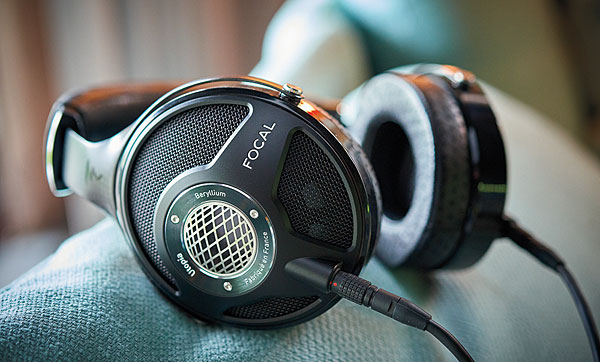
The Utopia is on the heavy side, but the headband and ear pads, made of lambskin over memory foam, are very comfortable. The ear cups are a combination of aluminum rings, black and silver aluminum grilles, and plastic grille frames, while the yokes are subtly patterned carbon-fiber bands that fit into bowtie-shaped holes in the headband. The rotation allowed by the bowties combines with the yokes’ asymmetrical grasp on the cups to relieve the strain of wearing these headphones. I wore them for hours at a time with no aches or discomfort.
A heavy 3-meter cable is terminated in Lemo connectors at the headphone end and a quarter-inch Neutrik stereo phone plug at the other. The big plug is the right choice for a product that probably won’t see portable use. However, having initially used the Utopia with a desktop PC and USB stick DAC, I wouldn’t have minded having a second, shorter, lighter-weight cable with a mini-plug (or at least a mini-plug adapter). But I get it: These headphones are designed to be reverently lifted from their heavy storage box and plugged into a high-end amp/DAC, probably one sitting on a rack near your armchair. I did that too.
Focal’s driver utilizes a pure beryllium diaphragm, like an oversized variant of what’s used for the tweeters in some bleeding-edge loudspeakers. Attached to the M-shaped dome’s inner fold is an unusual former-less voice coil, however. Most driver motors require a voice coil, an orderly stack of fine-gauge solid, thinly insulated wire. Common practice is to wind this wire around a former (think of a short toilet paper tube, often made of fiberglass, Kapton, or aluminum) and then glue it permanently into place. One end of the former becomes the attachment point to the diaphragm; the other end is pushed and pulled by the reaction between the signal through the voice coil and the magnetic gap. In the case of the Utopia, though, the wire is wound around a temporary mandrel, coated with glue, and the mandrel is removed before the glue fully dries. This leaves a voice coil, without the weight of a former, to be attached directly to the diaphragm. The resulting low mass enhances high-frequency response. A hair-thin surround and six-segment neodymium magnet structure provide for a high potential Xmax, or maximum linear excursion.
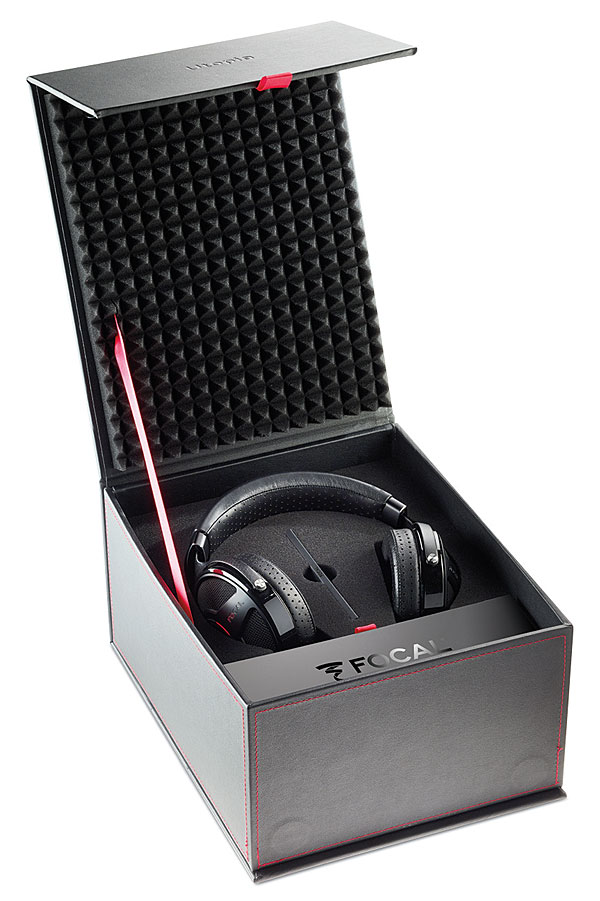
Toppermost
The Utopia has an extraordinarily refined top end and a carefully detailed midrange that equals or beats that of any headphone or speaker I’ve heard. Bass is deep and unexaggerated. All of this had several practical ramifications. One was the realization that most of the other transducers I’d previously heard were big ol’ distortion boxes compared with these full-range beryllium
dome drivers and their confidently clean output. Another was that
the headphones delivered reliably fine-grained portraits of whatever DAC or other signal source I was using at the moment—as well as the resolution of the format and,
of course, the quality of the recording and mastering. Utopia told the truth, and more of it than I’d ever experienced all in one place. The final ramification was that the truth was better than I ever thought
it could be—not because
the Utopia was subjectively euphonizing the sound, but because it sandblasted away all the distortive barriers to pleasure, leaving just the signal, stripped bare, and the pure contemplation of music.
That doesn’t mean these are the perfect headphones. There is no perfect anything in audio. If you want more skull-rumbling kettledrums or a generally larger-than-life quality, you might prefer a good pair of planar headphones. (They’d have to be pretty darned good planar headphones to be remotely competitive.) But the Utopia isn’t missing something; it just doesn’t editorialize anything. It delivers tight, dense, fully developed images and truthful, believable, fully developed timbres.
Initial use came with my desktop PC and a USB DAC nowhere near Utopia’s price class, the $199 AudioQuest DragonFly Red. The PC had just broken in the headphones for 24 hours, but we were still in the getting-to-know-you stage when I played a decidedly less than perfect version of Bert Jansch’s Moonshine—burned from vinyl onto CD-R, using the recorder’s crude analog-to-digital converter, then ripped to MP3 at 192 kilobits per second. These obsolete files should have been a perfect storm of badness. Yet the headphones patched a figurative fiber-optic cable straight into my brain’s pleasure center and made me concentrate on the voice, acoustic guitar, and overlay of warmth from the Shure V15VxMR phono cartridge originally used (before I snapped off the cantilever—which, ironically, was made with beryllium). The consequences of bad burning-and-ripping decisions were audible, but the Utopia gave them a slap on the wrist, steadfastly prioritizing the music. I hadn’t intended this demo to be profound. It was anyway.
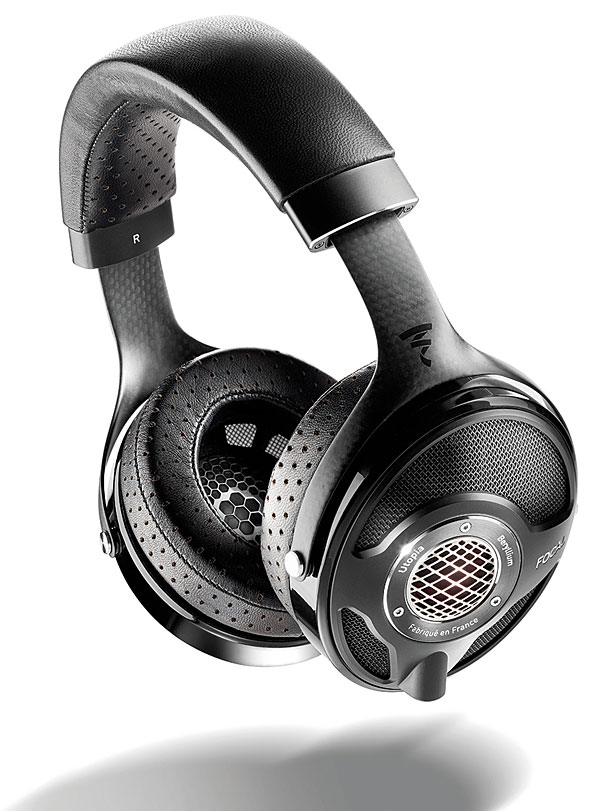
The next several demos were Apple Lossless rips from CDs. One of the best was the title track from Jan Akkerman’s Passion, an album of close-miked acoustic guitar. Until now I’ve always found that more ambitious headphones provided an over-resolved in-the-guitar sound. The Utopia’s resolution was second to none of them—yet its tight imaging didn’t shove me into the guitar’s sound hole. I was close to the guitar, not in it. When I switched to an Igor Zhukov recording of Scriabin’s Piano Sonata No. 10, the headphones uncovered colorful harmonics in the instrument that I’d never heard the same way before. Gautier Capuçon’s recording of Shostakovich’s Cello Concerto No. 1, with Valery Gergiev and the Mariinsky Orchestra, was an almost shockingly personal experience, not only because I could hear every detail of bow-on-string attack and woody body resonance but also because the Utopia left them (and me) so vulner- able and exposed. I merged with the cello; the musician was playing my nerves. I’ve never felt such emotions while sitting in my desk chair.
Back to Analog
Uncoupling the Utopia from the desktop system, I moved it to my main system rack, where a high-
end DAC and turntable were waiting. I started with the Micro Seiki BL-51 turntable and Shure M97xE cartridge, with a Denon PRA-S10 serving as both phono preamp and headphone amp; this would enable me to recheck the Jansch LP
in its original form. Then I switched to the Moon by Simaudio Neo 230HAD preamp/DAC, which accepted both the Special Edition analog output of an Oppo BDP-83 universal disc player and the USB output of a Windows 10 laptop.
Due diligence demanded the replay of Jansch’s Moonshine, though revisions in the vinyl rig made this less than a perfect A/B comparison. The haze lifted, while imaging and transients improved. The greatest beneficiaries were the string bass, which seemed deeper and truer, and the vocal, which went from warm, mellow, and slightly blurred to solid, unveiled, and lifelike. The Clash’s Combat Rock emerged with a tight, solid drum sound, and again the vocals stood out. The Utopia thrived on the rich prog-folk textures of the Strawbs’ Hero and Heroine, with especially colorful results in the backing vocals of “Shine On Silver Sun,” and it persuaded the rhythm section, which had previously seemed buried, to come out and play.
The star of the vinyl demos, however, was the Rolling Stones’ Exile on Main St. The Utopia raised the ratio of clarity to murk, better defining the classic guitar tones, while remaining true to the smoky atmosphere of the legendary French mansion (and various studios). While the beryllium dome drivers didn’t raise the prominence of Charlie Watts’ cymbals in the mix, they did seem more naturally metallic and better defined at various distances from the mics. If the Utopia were a permanent resident in my home, I’d listen to a lot more vinyl with headphones.
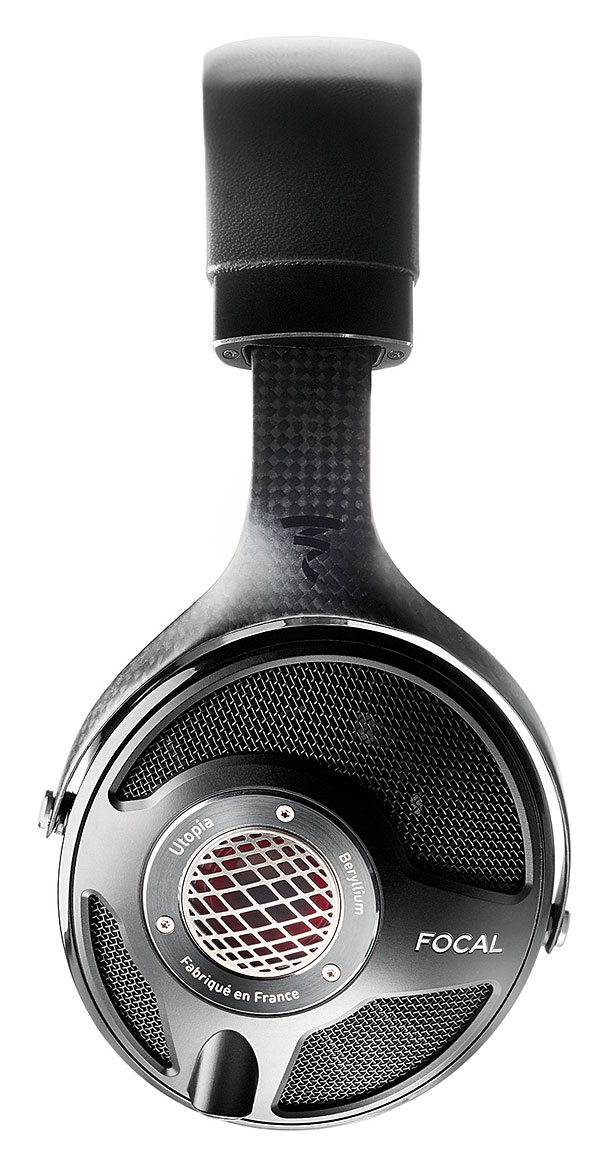
When I moved back to digital, and the CD release of Michael Tilson Thomas’ Deutsche Grammophon recording debut with the Boston Symphony Orchestra, the Utopia brilliantly organized challenging musical material to uncover its essence and set aside potential irritations, starting with the tumult of Charles Ives’ Three Places in New England. The tympanic thunder and brass slashes that begin and end Carl Ruggles’ Sun-treader were a brilliant contrast of bass weight, metallic zing, and stately decay, while the gentle meandering of Walter Piston’s Symphony No. 2 became a fall foliage tour of tone color.
Having previously concentrated on the 5.1-channel mixes of several prog-rock classics on hi-res disc releases, I loved discovering their hi-res stereo versions. Emerson, Lake & Palmer’s Tarkus (DVD-Audio, MLP), remixed in 2012 by Steven Wilson, was a feast of texture. Some details of Keith Emerson’s gritty wide-panned Hammond organ and Greg Lake’s often subtle twang bass came to my attention for the first time. The Yes album Close to the Edge (Blu-ray, PCM) came alive as I’ve never heard it before, with the Utopia and Wilson’s 2013 remix working in tandem to introduce a new clarity and coherence to what was once a dense, cluttered soundstage, making each instrument suddenly luminous and happy in its own little space. It was stereo with the easy spaciousness of surround.
Not having any other $3,999 headphones around for comparison, I fell back on my most-used triumvirate: the HiFiMan Edition X V2 ($1,299), Sennheiser HD600 ($400), and Sony MDR-V6 (now $99). The five test tracks were the first movement of Beethoven’s Fifth (Carlos Kleiber, Vienna Philharmonic, FLAC 88.2/ 24), Led Zeppelin’s “Dancing Days” (FLAC 96/24), David Chesky’s “Ben’s Farm in Vermont” (FLAC 192/24), Nick Drake’s “Things Behind the Sun” (FLAC 96/24), and Madeleine Peyroux’s cover of “Gentle on My Mind” (FLAC 44.1/24).
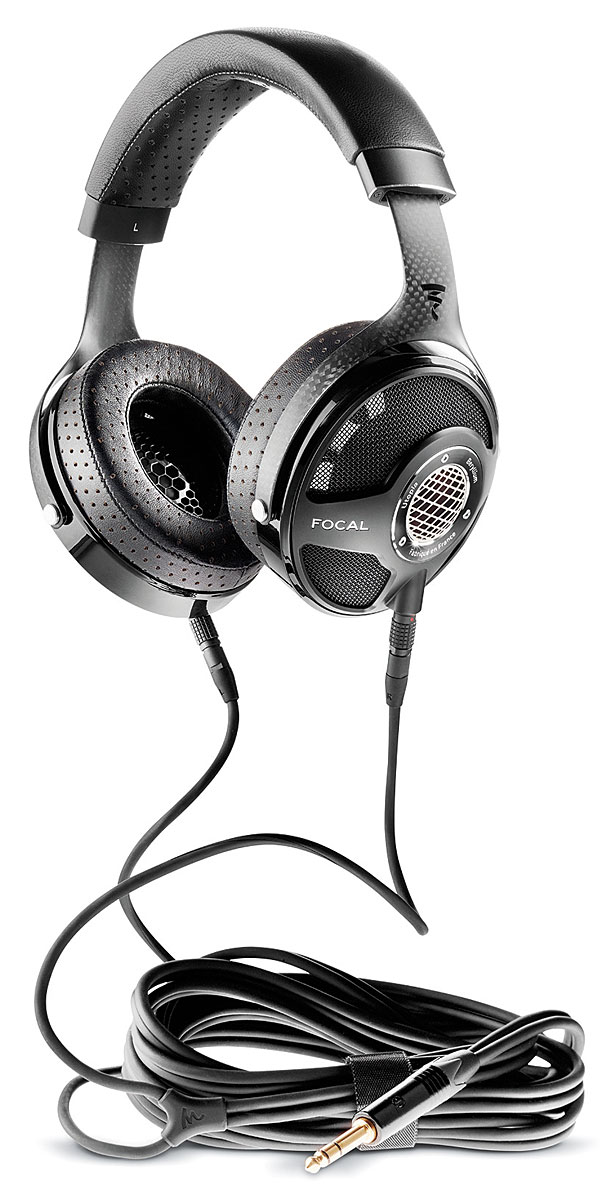
In “Ben’s Farm,” my go-to track for high-frequency delicacy, the Utopia delivered the definitive performance, not only reproducing the daintiest of the chiming percussion instruments and gently scraping violins but also reproducing them at the lowest volume levels. The HiFiMan came the closest in treble delicacy; it was, if not identical, approximately as fine. Its planar drivers had the advantage in reproduction of space, both for the two concert-hall recordings and for the Zeppelin studio track. The Sennheiser and Sony were both a major step down in high-frequency extension and detail retrieval, though the Sennheiser did assert its winning way with vocal authenticity for Drake and Peyroux; it made their vocal lines flow in a way that felt natural and right. The Sony’s treble emphasis was no substitute for the Utopia’s treble finesse.
I needn’t belabor the fact that the Focal Utopia has the best top end of any headphone I’ve ever heard. But isn’t the price practically a provocation? I should point out that Focal does offer the less expensive Elear, with aluminum-magnesium dome drivers, for a quarter of the price, and really good headphones can be had for a few hundred. You could buy three HiFiMen, 10 Sennheisers, or 40 Sonys for the price of one Utopia. But even at $3,999, the Utopia costs less than about three-dozen floorstanding speaker models in our Top Picks. For what is surely the king of the dynamic-headphone category, that’s prac- tically a steal.
- Log in or register to post comments















